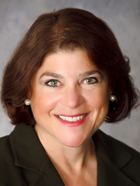
The aging of the American population and the healthcare issues that go with it are creating a demographic earthquake that will shake our current system of healthcare to the core. The ramifications go beyond state and federal budget deficits to impacting the lives of several generations of families.
We are on our way to becoming a nation of caregivers, a job description we are largely unprepared to fill.
How bad will it be? And what positive actions do we need to take as a society to build the skills and workforce necessary to become a nation of caregivers?
The latest Progress Report on Alzheimer’s Disease from the National Institute on Aging and National Institutes of Health report that an estimated 2.4 million to 5.1 million Americans may have Alzheimer’s disease today. The rate of occurrence of new cases increases exponentially among people age 65 to 90, according to the NIA/NIH.
The age group over 85 is the fastest growing segment of the U.S. population and should grow from 5.5 million today to 19 million by 2050. The NIA estimates that the numbers of people in the United States over 65 will grow from 39 million in 2008 to 72 million in 2030 and at least 10 million baby boomers will develop Alzheimer’s disease in their remaining lifetimes — twice as many as have the disease today.
LTC specialists in demand
Beyond potential Alzheimer’s disease, the nearly 78 million baby boomers between the ages of 47 and 65 years old in America are entering a time of critical healthcare needs and face many age-related diseases such as osteoarthritis, accompanied by societal trends such as obesity. Americans are also living longer. All of this means an increased need for long-term care specialties.
The challenge starts with a growing need contrasted with too few skilled workers able to provide support at all levels, from administrative and maintenance to skilled nurses, senior counselors and medical professionals. We need improved education — from high school through advanced college degrees — to increase the understanding of the challenges of an aging society and develop new skills that can begin closing the gap.
According to the Bureau of Labor Statistics, healthcare will generate 3.2 million new wage and salary jobs between 2008 and 2018, more than any other industry, largely in response to rapid growth in the elderly population. Ten of the 20 fastest growing occupations are related to healthcare. Many job openings should arise in all healthcare settings as a result of employment growth and the need to replace workers who retire or leave their jobs for other reasons.
The sector will see growth of 22% through 2018, versus 11% for all industries combined. Biggest areas of growth: home health care services, 46.1%; offices of other health practitioners, 41.3%; and outpatient care centers, 38.6%.
“Employment in home healthcare, nursing and residential care should increase rapidly as life expectancies rise, and families are less able to care for their elder family members and rely more on long-term care facilities,” report authors note. Tougher immigration laws are also slowing the number of foreign healthcare workers entering the United States, making it easier to get a job in the industry, the BLS reports.
New job categories opening
Future high-demand healthcare jobs created by the aging population will be everywhere. They include any skill aimed at healthy aging, which includes exercise, purposeful living, social engagement, physical well-being, spiritual, and psychological aspects of longevity rather than just treatments. Community colleges and universities are launching new degree programs in complementary and alternative health, health informatics and gerontology. The technological revolution toward electronic health records and wireless healthcare is creating other new and growing job categories.
The U.S. Department of Health and Human Services is advancing programs for “Aging in Place,” or Domotics. In a 2010 report to Congress on “Aging in Place: the National Broadband Plan and Bringing Health Care Technology Home,” the HHS reported that the goal of the program isn’t to just purchase and install information technology, but to “make improvements in health and healthcare through health IT.” The areas include video consultation services, home monitoring and the secure sharing and remote reading of patient information.
The potential cost-savings are significant. The HHS reported on how the Department of Veterans Affairs (VA), through a program to help veterans manage chronic conditions at home, decreased hospital use by 25% overall and 50% in rural areas. Similar approaches could work throughout our entire health care delivery system.
Governments will adjust and budgets will change, perhaps with tax increases, because they have to in order for our nation to deal with caring for an aging population with multiple chronic illnesses. If our nation can see unified and focused efforts from our federal and state governments, relevant agencies and educational institutions at all levels, the demographic earthquake doesn’t have to create long-term disasters.
Rather, a unified national effort has the potential to create new initiatives that are good for the healthcare system, good for the economy and good for patients and their caregivers.
Alice Vestergaard is a professor in the College of Health, Human Services, and Science at Ashford University. She has specialized in long-term care, emerging health technology, and the study of brain-health in aging.



